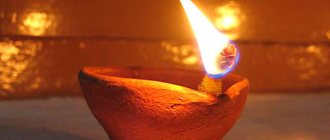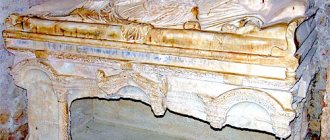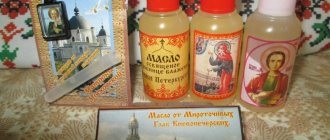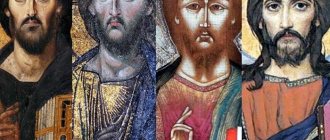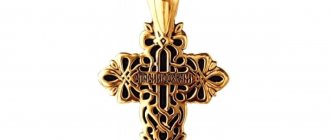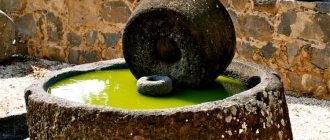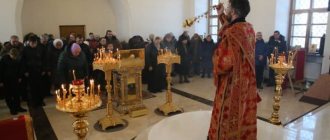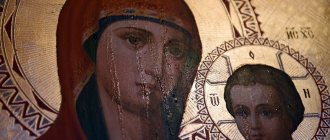(James 5:14) If any of you is sick, let him call the elders of the Church, and let them pray over him, anointing him with oil in the name of the Lord.
There were three levels in Solomon's Temple - these are rooms or tiers. Grain, wine and oil were stored on the ground floor. The second floor is a resting place for the priests of the temple. On the top floor, in three rooms, all the gold and silver were stored - this is a treasury.
God's answer is in the treasury, and we will draw from the riches of His glory. Now these three rooms are in heaven.
We are now in a place with grain, wine and oil - on the first floor.
Grain, wine and oil
Grain and wine always go together - this is Communion.
Oil is oil, a symbol of the Holy Spirit.
It's time for people to apply the oil to themselves, to their homes, to their loved ones. Perhaps this sounds strange and like some kind of superstition or oil - is it something from the Old Testament? Oil has a symbolic meaning, but God never neglects the medium itself.
(Mark 6:12-13) They went and preached repentance; They cast out many demons and anointed many sick people with oil and healed them.
Jesus was still with the disciples, but they anointed the sick with oil and had results.
What was the result? There were many healed. Where oil was used, health was restored.
Jesus ascended into heaven and the era of the Church began.
Blessing of Unction
In ancient times, oil was used as one of the main medicines: it was used, in particular, for healing wounds (see: Isa. 1:6). Olive oil was used in lamps (see: Ex. 27:20). Along with wheat and wine, oil was one of the main foodstuffs (see: Deut. 11:14): its abundance was perceived as a blessing from God (see: Deut. 7:13; Jer. 31:12), and its absence - as punishment (see: Mic. 6:15; Hab. 3:17). As a food product, oil enters inside a person, into his bones (see: Ps. 109:18). Oil was also a cosmetic product: it was used to anoint the body, for fragrant rubbing (see: Am. 6:6; Esther 2:12; Ps. 91:11), and anointed hair with oil (see: Ps. 22:5 ).
In the Old Testament tradition, oil is one of the main religious symbols. Oil is a symbol of healing, salvation, reunification with God (see: Ezek. 16:9). In addition, it is a symbol of joy (see: Ps. 44:8, 103:15), love (see: Song 1:2), friendship (see: Proverbs 27:9), brotherly communication (see. : Psalm 133:2). Oil was a symbol of God's chosenness and royal power, therefore it was used to anoint kings and priests (we talked about this meaning of oil and the symbolism of anointing in connection with the Sacrament of Confirmation). Through anointing with oil (mirror), the Spirit of God was transmitted to God’s chosen one (see: 1 Samuel 10:1–6, 16:13).
In the Christian tradition, oil has become, first of all, a symbol of spiritual healing: in this meaning it is mentioned, in particular, in the parable of the Good Samaritan (see: Luke 10:34). At the same time, oil is a symbol of light: in this role it appears in the parable of the ten virgins (see: Matthew 25:1–13). The Greek word (mercy) is consonant with the word (oil, oil), so oil was perceived as a symbol of mercy, reconciliation and joy.
One of the important aspects of Christ's earthly ministry was the healing of diseases, and the Gospels are filled with stories of numerous healings performed by the Savior. The Gospels do not preserve evidence that Christ used oil during healing. However, when He sent His disciples to preach, they went and preached repentance, cast out many demons, and anointed and healed many sick people (Mark 6:12-13). Thus, even during the life of Christ, oil was used in the Christian community to heal illnesses.
In the ministry of the apostles after the resurrection of Christ, the healing of the sick occupied an essential place (see: Acts 3:2–8, 5:15–16, 8:7, 9:32–34, 28:8). In the apostolic age, the gift of healing was possessed not only by the apostles, but also by other members of the Christian community (see: 1 Cor. 12:9). Obviously, the ministry of healing was one of the aspects of the activity of the elders, as is clear from the words of the Apostle James: If any of you is sick, let him call the elders of the Church, and let them pray over him, anointing him with oil in the name of the Lord. And the prayer of faith will heal the sick person... and if he has committed sins, he will be forgiven
(James 5:14–15).
It is these words of the Apostle James that are the main evidence of the existence of the Sacrament of Anointing in the apostolic era (even if it was not called a Sacrament and was not formalized into a separate rite). The main elements of the Sacrament are the participation of several elders and the anointing of the sick with oil. Moreover, the healing power is attributed not to the oil, but to the “prayer of faith.” The sacrament must have a double effect: promote bodily healing and grant forgiveness of sins.
Evidence of the existence of this Sacrament in the works of Eastern Christian writers of the 3rd–5th centuries is sparse. All of them are also indirect. So, for example, Origen quotes the words of the Apostle James about anointing the sick with oil, speaking about repentance; at the same time, he replaces the words “let them pray over him” with “let them lay hands on him” (which may confirm the custom of laying on of hands when anointing with oil). John Chrysostom and Cyril of Alexandria quote the words of the Apostle James, but do not comment on them in any way. Elsewhere, Chrysostom mentions those “who with faith and in good time, having been anointed with oil, were freed from illness,” but does not give any indication of where and how this anointing took place.
The Antioch presbyter Victor (5th century) writes more definitely about the consecration of oil:
What the Apostle James talks about in his canonical letter is no different from the present... Oil heals illnesses and is the cause of light and joy. Therefore, the oil used for anointing signifies mercy from God, healing of illness, and enlightenment of the heart. For prayer accomplishes everything, as everyone knows, and oil serves only as a symbol of what is happening.
Some researchers explain the silence of Eastern Christian authors regarding the Sacrament of Anointing, firstly, by the fact that the ancient fathers “had little reason to talk about the Sacrament of Anointing, which was communicated not in the church during a solemn service, but in private homes.” Secondly, the consecration of oil by the early Church Fathers was considered either as a complement to repentance (Origen), or as part of the final farewell. Thirdly, “the reason for the silence of the Church Fathers about this Sacrament lies in the custom of keeping sacred objects secret.”
The last explanation can hardly be considered convincing: the “discipline of secrecy” (disciplina arcani), or “secret discipline” (disciplina arcana), was applied by some authors of the 2nd-3rd centuries in relation to the Sacrament of the Eucharist and some other church customs, but in the 4th century this The sacrament was spoken quite freely and in detail. There was therefore no reason to cover the Sacrament of Anointing with a halo of silence. The silence of Eastern Christian authors regarding the consecration of oil can most likely be explained by the relative lack of development of this Sacrament during this period, and also, perhaps, by the fact that it was used rarely - only in cases of particularly serious illnesses.
As for Western writers of the 5th-6th centuries, they have direct references to the Blessing of Oil as a Sacrament. Pope Innocent I (402–417) mentions “the sick believers who may be anointed with the holy oil of chrism, or unction.” And further, answering the question whether a bishop can perform this anointing, he writes: “There is no reason to doubt the possibility for a bishop of what a presbyter can undoubtedly perform.
The apostle speaks about elders because bishops, being held back by their busyness, cannot go to all the sick.” Finally, Pope Innocent writes about the impermissibility of teaching this Sacrament to those under church penance: “This anointing cannot be taught to those undergoing repentance, because it is a Sacrament. For to whom are the other Sacraments forbidden, how can only one be permitted?”
The place where the Sacrament of Anointing is performed, if you follow the instructions of the Apostle James, should be the home of the sick (“if any of you is sick, let him call the elders”). However, there is numerous evidence that the Sacrament - at least starting from the 4th century - was also performed in churches. The emergence of this custom was facilitated by the establishment of hospitals at churches in the 6th-7th centuries. In the Euchologies of the 10th-11th centuries, the temple is indicated as the place where the Sacrament of Anointing was performed, and the Sacrament itself is associated with the liturgy. So, for example, the Euchology of 1027 speaks of the conciliar service of the Divine Liturgy by seven priests, before the beginning of which the consecration of the oil is performed. At liturgies, special troparia and readings are added, thematically related to the consecration of oil. The anointing of the patient itself occurs through the prayer behind the pulpit.
In some liturgical manuscripts, the Sacrament of Anointing was linked with other services of the daily cycle, in particular with Vespers and Matins. One of the 13th-century manuscripts says: “On the same day when the blessing of oil is prescribed, seven presbyters gather and perform vespers with a requiem and sing the canon. At the end of Matins, the seven presbyters celebrate the liturgy in various churches, and then gather in one and here perform the holy oil.”
With the disappearance in the 13th century of the custom of building hospitals at churches, the connection between the blessing of oil and worship was broken. Euchologies of subsequent times indicate a temple and a private house as two possible places for the performance of the Sacrament. Vespers is omitted, but the connection with Matins remains: the chants and prayers of Matins merge with the rite of blessing of oil, forming its first part.
The number of elders required to perform the consecration of oil is not determined by the Apostle James. Presumably, in the period before the 7th century, the Sacrament was performed by three presbyters; in the 7th–8th centuries, the number seven came into use. In any case, the surviving rites of the Sacrament in the liturgical monuments of the 9th-10th centuries already mention seven presbyters. However, in the Sequence of Holy Oil in the manuscript of the library of the Sinai Monastery No. 973, dating from 1153, which mentions “seven presbyters,” it also says that “in case of need or due to a lack of presbyters, two or three perform the Sacrament.”
We find similar recommendations in Simeon of Thessalonica in the chapter devoted to the Sacrament of Anointing:
Others, due to a lack of priests, call only three; and this should not be condemned, because, firstly, this is for the sake of the power of the Holy Trinity, and then - and in remembrance of the testimony and preaching that once happened through Elijah, when he raised the dead son of the Sarepta woman, having prayed three times and prostrated himself over him three times ( see: 3 Kings 17:21–22)… And according to ancient custom there should be seven elders, but by necessity less than three, and they pronounce everything that is customary to pronounce.
It is obvious that although the rite presupposes the presence of seven presbyters, in reality it was not always possible to achieve such a number, so the Sacrament could be performed by three priests, and in some cases two or even one.
In the West, starting from the 5th century, the practice prevailed according to which the consecration of the oil was performed by the bishop, and the anointing of the sick with consecrated oil by the presbyters. This practice was confirmed by a number of Councils, including the Council of Trent (1545–1563), whose decree states: “The Church has recognized that the matter (of the Sacraments) is oil blessed by the bishop.” In the East, the consecration of oil was included in the very rite of consecration of oil: it was performed by the eldest of the seven (three) elders immediately before the anointing of the sick.
The Blessing of Anointing was performed both in the East and in the West on the seriously ill, including the terminally ill. In the East, anointing a terminally ill person was performed with the hope of healing. In the West, starting around the 10th century, the view of anointing as the last farewell of a dying person to eternal life was established. The sacrament received the name extrema unctio (Latin for “last anointing”). The decree of the Council of Trent states: “This anointing should be given to the sick, especially to those whose condition is so dangerous that they seem to be approaching the end of their lives, which also led to the name of this Sacrament as the Sacramentum exeuntium.”
The Orthodox have argued with this understanding of the Sacrament, insisting that in accordance with the words of the Apostle James, as well as in accordance with the text of the rite itself, the consecration of oil should be performed on the sick for the healing of soul and body. Patriarch Nikephoros II of Constantinople (1260) refutes the opinion that the blessing of oil can be performed on the dead, referring to the words of the rite: “By Thy Spirit descend upon Thy servant, so that for the rest of his life he may walk in Thy laws”; “Rise him up from the bed of sorrow and from the bed of suffering.”
Only in the 20th century did the Catholic Church partially abandon the medieval understanding of anointing as a final farewell. The modern Catechism of the Catholic Church says about anointing that it is given to “the dangerously sick” and that it “is not only a Sacrament of the dying.” According to the Catechism, “it is appropriate to receive the Sacrament of Anointing on the eve of a major operation.” However, “the time for its acceptance undoubtedly comes when the believer begins to be in mortal danger due to illness or old age.” If it is intended for the seriously ill, “then it is even more intended for those who are on the verge of leaving this life.” The Catechism specifies that “in addition to anointing,” the Church offers the Eucharist to the dying as a final farewell.
In the Greek Church, starting from the 12th century, there was a custom of performing the Sacrament of Anointing of the Dead. This custom developed from a more ancient tradition - anointing the deceased with oil as one of the funeral rites. Eastern Christian authors treated this custom differently. In the 13th century, Patriarch Nicephorus sharply condemned him. In the 14th century, Simeon of Thessalonica shows a more lenient attitude towards custom. He notes, speaking about the consecration of oil over the dead, that “some of the bishops prohibit (it) as not conveyed in Scripture, others allow it as being performed for the benefit of souls.” Simeon himself believes that anointing the dead with oil is permissible, but “this is not the oil that was given by the Savior and the apostles” for healing the sick: “For the dead, oil is brought as an offering and the glory of God, for the sake of mercy for those who have departed and forgiveness (of their sins), like how wax candles, incense and much more are brought for them to the temple and tombs.”
The spread in the West of the view of the consecration of oil as the final anointing, and in the East of the practice of performing this Sacrament over the dead or the healthy, was facilitated by the fact that the Sacrament was performed for the remission of sins. Already ancient authors (Origen, Chrysostom) linked this Sacrament with repentance, and in a much later era the view of the Blessing of Oil as a kind of completion of confession spread. Some believe that forgotten sins are forgiven in the Sacrament of Anointing. However, such an understanding does not follow either from the rite of the Sacrament or from the theological tradition of the Eastern Church. As for forgotten sins, they, as mentioned above, are forgiven in the Sacrament of Confession. As for the forgiveness of sins in the Sacrament of Anointing, it is not due to the need to complete confession, but rather to the awareness of the fact that the healing of the soul is no less important than the healing of the body: without the former, the latter cannot happen. That is why prayer for healing from illness is associated with forgiveness for the remission of sins.
Is it possible to perform the Sacrament of Anointing on healthy people? This cannot be answered unequivocally. On the one hand, the entire rite of the Sacrament shows that it must be performed on a seriously ill person, whose health and life itself are in serious danger. On the other hand, in theological and liturgical literature since the 10th century, the possibility of anointing healthy people present during the anointing of the sick has been repeatedly mentioned - in one context or another. The Greek manuscript of 1027 says that along with the sick, the Sacrament can be received by his household. Similar instructions are preserved in Greek and Slavic manuscripts up to the 17th century inclusive.
The idea that anointing can be performed on healthy people led in the Orthodox East to the emergence of the practice of the so-called “general unction”, when the Sacrament of Anointing was performed en masse on everyone who wanted it. This practice is quite early: it existed in the Great Church of Constantinople and from there came to Rus'. In the Greek Church of the 17th century, the performance of this rite was timed, in particular, to Maundy Thursday and Holy Saturday.
Russian traveler Arseny Sukhanov, who visited Jerusalem in the mid-17th century, described in detail the “general unction” performed in Jerusalem on Holy Saturday:
At three o'clock in the afternoon the patriarch left the church into his yard, and so did all the others... And the patriarch came to his house, and after some time in his cell, he went to Tsar Constantine to bless oil for the chosen people who give more, and then he anointed them, locking himself in churches; then he blessed the oil in the cathedral vestibule of his patriarchs; and here all the authorities and priests, monks and other laymen were anointed here; and when he anoints someone, he gives an efimok, and another half; and the deacon stands next to the patriarch with a dish, and then money is placed on the dish. After that, all the fans will be given a candle, and they will take an efimka per candle for the patriarch; after that, and others before that, come to the patriarch in the cell to confess their sins, monks and laymen, nuns and wives. In the Great Church, the church will be full of all kinds of people, and the Metropolitan here blesses the oil and anoints all those who come, Christian Arabs, husbands and wives and babies.
Despite the fact that evidence of the practice of performing the Sacrament of Anointing of the Healthy and of the practice of “general unction” is found quite early, neither one nor the other custom can be considered consistent with the meaning of the Sacrament. Moreover, if a priest anoints himself before anointing a sick person, this does not mean that he performs the Sacrament of Anointing at the same time on himself. This action can be explained by the widespread idea in the Orthodox Church (reflected in the words of the order of some Sacraments) that the performance of the Sacrament over one or another member of the Church can be useful for the performer himself. The same should be said about the anointing of the sick person’s household: they can be anointed with consecrated oil once before performing the Sacrament on the sick person or, conversely, at the end of the Sacrament. In this case, anointing will mean a blessing of the Church (similar to that which is given during anointing with oil at the all-night vigil), and not the performance of the full Sacrament of Blessing of Oil on each of those present.
Priests and lepers
Lepers were anointed with blood and oil.
(Lev 14:14) And the priest shall take the blood of the guilt offering, and the priest shall put it on the edge of the right ear of the one being cleansed, and on the thumb of his right hand, and on the big toe of his right foot.
This meant that their ear and what they heard was now sanctified. Also blessed is what they do (finger) and where they go (toe). Next, the priest applied oil on top of the blood.
(Lev 14:15-18) And the priest will take oil from the log and pour it into his left palm; And the priest shall dip his right finger in the oil that is in his left palm, and sprinkle the oil from his finger seven times before the Lord; The priest will place the remaining oil that is in the palm of his hand on the edge of the right ear of the person being cleansed, on the thumb of his right hand, and on the big toe of his right foot, in the places where
the blood of the guilt offering; and the rest of the oil that is in the palm of the priest he will put on the head of the one being cleansed, and the priest will cleanse him before the Lord.
How to use oil today
We don't apply blood today because the Blood of Jesus Christ has already been applied to us. But we can use oil. We can apply it to our home by anointing the doors and doorposts. If you are worried about some part of your body, you can touch it with anointing oil. You can apply the oil to your forehead.
When disaster was about to strike Jerusalem, God said to His Angels:
(Eze 9:3-4) And the glory of the God of Israel descended from the Cherubim on which it was to the threshold of the house. And He called a man dressed in linen, who had a scribe's instrument at his belt. And the Lord said to him: go through the middle of the city, in the middle of Jerusalem, and make a sign ( oil
).
What's happened?
Oil is called sacred oil. They get it in a very difficult way. First you need to collect the myrrh that exudes from some icons and relics of saints. After this, it is added to vegetable (olive) or vaseline oil. In addition, lamp oil is dripped into these compositions from undying lamps located strictly next to the icons. The resulting viscous liquid is poured into consecrated vessels and sold.
Most often, believers use oil for healing from various ailments. It can be used to treat both children and adults. To achieve a positive effect, you need to know how to use oil correctly.
How Jacob used oil
The first time oil is mentioned in the book of Genesis is when Jacob left home because he was afraid of his brother. He stopped at a place called Bethel - the House of God. There he took several stones and fell asleep on them. God spoke to him in a dream.
(Genesis 28:14-15) And your descendants will be like the sand of the earth; and you will spread to the sea, and to the east, and to the north, and to the noonday; and in you and in your seed all families of the earth will be blessed; and behold, I am with you, and I will keep you wherever you go; and I will bring you back to this land, for I will not leave you until I have done what I have spoken to you.
Just full promises and no conditions. Think about it—Jacob had just deceived his father and brother, yet God showed him grace—undeserved favor.
If you see in the Bible it says “the God of Jacob” and not “the God of Israel,” then this phrase indicates the grace of God.
The God of Jacob will protect you and help you—He is a God of grace.
Jacob dreamed of a ladder going up to heaven. Angels ascended and descended along it.
When Jesus came to earth, it is said: “I saw the Spirit descending from heaven and remaining on Him,” this is an allusion to Jacob’s ladder.
(John 1:32) And John testified, saying, I saw the Spirit descending from heaven like a dove, and remaining on him.
(John 1:51) And he said to him, “Truly, truly, I say to you, from now on you will see heaven open and the angels of God ascending and descending on the Son of Man.”
Jacob poured oil on the stone.
(Genesis 28:18) And Jacob rose up early in the morning, and took the stone which he had set for his head, and set it up for a pillar, and poured oil on the top of it.
Composition of the blessed ointment
According to people, it contained more than 50 components. There are probably 40 of them now.
To make myrrh, good grape wine is mixed with oil. They say that it prevents burning and even fire during the world vision - after all, according to the Charter, it lasts almost a week.
Other ingredients of the world are incense. There are no special instructions for them in the Church Charter, and they differ in different national traditions.
For example, the world might have:
- rose essential oil;
- incense;
- oils of violet, lemon, nutmeg and others.
Bethel - House of God
Oil is closely associated with the House of God. It is there that you will find the Angels of God ascending and descending to the Son of Man.
Where can I find oil and all the promises of God about protection and care? In the House of God. The house of God is not brick walls or a building. The house of God is when we all come together.
(Ps 90:9) For you have said: “The Lord is my hope”; You have chosen the Almighty as your refuge.
It will be right if you make the House of God your abode.
People often read the Bible superficially, but it needs to be explored. If you read Psalm 90:9 in Hebrew, you can see the word “oil.”
If you apply oil to something, then evil will not stick to you.
(Ps 90:9-10) For you have said
: “The Lord is my hope”; You have chosen the Most High as your refuge; no evil will befall you, and no plague will come near your dwelling.
Anoint your home and your loved ones with oil. Under the blessing and anointing of the Lord, the oil becomes anointing oil—holy oil.
Saint - set apart for a special purpose.
The devil cannot touch what is holy. He deals only with the dirty and unclean - with that which bears the mark of sin.
Unbelief in the forgiveness of sins is also the food of Satan.
Holiness is integrity.
Illness is not a natural state. God never intended for man to be sick. God wants man to always be healthy and whole.
Holy - set apart, special.
When you pray in the name of Jesus Christ, the anointing will fall on the oil.
The healing power of oil - what is it?
Oil can be any oil that has been blessed. Now you need to learn about its properties. Firstly, blessed oil improves physical condition, relieves pain, and relieves headaches. Secondly, it calms you down. The effect of using this oil comes very quickly and lasts for a long period of time.
The oil obtained after the consecration of oil has the most powerful healing properties. Many people suffering from illnesses come to church on the day of the ceremony in order to then experience its miraculous effect on themselves.
Oil that was consecrated at lamps in places of great power is also considered powerful. The same is said about the sacred oil, which was brought along with the relics of Orthodox saints and icons.
To get rid of headaches you need to apply it to your temples. For severe allergies, eczema and skin rashes, damaged areas of the skin are treated with gauze or a cotton swab dipped in the sacred composition. After this, the tampon or gauze must be burned! Throwing them away is strictly prohibited.
Church oil is suitable for the treatment of all diseases. It can even heal infertility. To do this, just apply it to the lower abdomen.
The oil should be kept at home next to the icons. It is important to remember when using oil that such oil should not be placed in the refrigerator or near strong heat sources (stove, radiator, heating devices), but this is true. This may negatively affect its properties.
How did the oil appear?
In order for the oil to appear, you need to crush something. This is exactly what happened to Jesus in the Garden of Gethsemane—He was “crushed.”
Previously, the main purpose of the oil was to kindle the minora in the temple. Jesus was “crushed” in the darkness of the Garden of Gethsemane to bring light into the darkness of the world.
(Luke 22:44) And being in agony, he prayed more earnestly, and his sweat was like drops of blood falling to the ground.
During the time of Jesus, virgin oil was used for medicinal purposes.
After this, Jesus was “crushed” again. His back was cut with a whip. By His stripes we are healed.
The third spin was used as soap, that is, for cleansing.
On the cross, Jesus was “crushed” under the weight of our sin. He suffered for us and we were cleansed from all our sins.
The same can be said about bread and wine. We do not gather grain directly from the field or obtain wine directly from the vine.
The grapes must be crushed, and the bread must be threshed, sifted and threshed again, and then it is thrown into the oven. So it was with our Lord Jesus.
The grapes need to be crushed and trampled. Sacred oil does not grow on the olive tree; it must be squeezed out. It was the same with Jesus. He loves us. And the oil also speaks of His love.
You can turn to the Lord right now.
Prayer
Father! We offer You this simple oil and ask You: Bless this oil and make it holy anointing oil, sanctified for Your purposes, intended for the glory of the Lord Jesus Christ.
Father! We ask that everything this oil touches be changed. Let illness be replaced by health and wholeness. Let the dead rise. In the name of Jesus we pray that this oil will turn failure into success, barrenness into fruitfulness. Father! We thank You for Your protection, provision and restoration.
All glory to Jesus!
Miro is a special sacred liquid
The Holy Myrrh is consecrated once a year - on Maundy Thursday of Holy Week on the eve of Easter. In the ancient Church, this rite was established because the Baptism of new Christians was usually carried out on Holy Saturday and Easter. Today it is carried out according to custom. In the Russian Orthodox Church, Its head, His Holiness the Patriarch, sanctifies olive oil with a mixture of precious aromas as peace. It is brewed during the first weekdays of Holy Week according to a special ancient method, and after consecration it is sent to all parishes of the Church. Without peace, the Sacrament of Baptism, combined with the Sacrament of Confirmation, remains incomplete - through the chrism, the newly baptized person receives the gifts of the grace of the Holy Spirit.
Then the myrrh in special myrrh vessels is transferred to churches, where it is kept on the throne.
